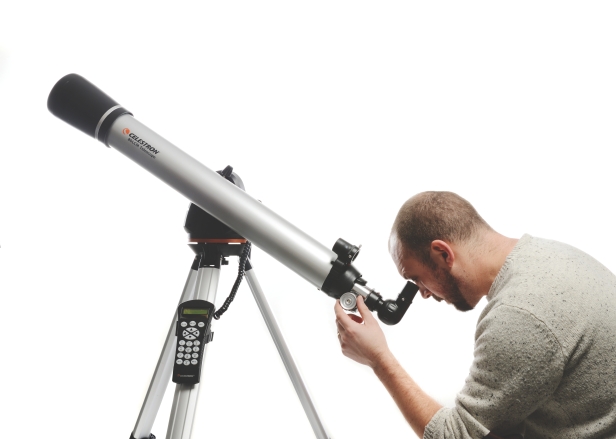
Polaris’s position holds steady throughout the night, and you can find it using the Big Dipper: just look along the imaginary line between the constellation’s outermost stars-the two farthest from the “handle.” If you want to be able to identify a star without help from your phone, the North Star-or Polaris-is a good place to start. Using one of those apps? Set your phone’s display as dim as possible to preserve your night vision. Photo credit: Leon LiuĪccording to Guzman, it takes your eyes about an hour to adjust to the dark sky-so the longer you can go without looking at indoor lighting, street lamps, or headlights, the better.
TELESCOPE FOR STARGAZING FULL
Today’s burgeoning astronomers can pull up a full map on their smartphones and tablets. Guzman learned his way around the night sky the old-fashioned way, using books and paper maps. Smartphone apps like Stellarium and Google Sky can also help: point your phone skyward to see the names of major stars, planets, and constellations appear on the screen.
TELESCOPE FOR STARGAZING HOW TO
Today, he teaches people how to “star hop” starting with a few easily identified celestial signposts. Guzman learned his way around the sky using maps he found in books and magazines at his local library.


“More heat means more motion in the atmosphere, which distorts the dim light from stars and causes waviness,” Guzman says. Whether you use a telescope, binoculars, or the naked eye, cold, windless nights offer the best viewing conditions. “You can explore the surface of the moon and even see the rings around Saturn.” If you want more detail, Guzman has a suggestion: “Binoculars can open up the universe,” he says. But don’t give up on the night sky if you can’t find a local astronomy event in your neighborhood: Guzman has tips for city stargazers wherever they are.įrom major constellations to shooting stars and the International Space Station, there are plenty of fascinating objects in the night sky visible without any special equipment at all. To help Chicago residents get started, Guzman hosts regular “star talks” along The 606 park and trail-sharing his professional tips and powerful telescopes. Photo credit: Joe Guzman, Chicago Astronomer His fancy telescopes can view distant celestial bodies, but he also says there’s plenty to see in the night sky over the city, using just your eyes. “You can see wondrous things in the night sky over the city, if you know how to look.”Īstronomer Joe Guzman leads star talks in Chicago’s parks. As the Chicago Park District’s resident astronomer, Guzman is all about teaching city dwellers how to take to the sky from their own backyards, front stoops, or neighborhood parks. “It’s a misconception that living in the big city means the night sky isn’t available to you,” he says, and he should know.

Astronomer Joe Guzman wants to make one point clear-even if your view of the stars isn’t.


 0 kommentar(er)
0 kommentar(er)
